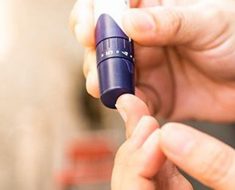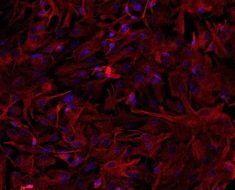
Does the sight of maggots squirming in rotten food make you look away in disgust? The phrase ‘makes my stomach turn’ takes on a new meaning today as researchers at the University of Cambridge reveal that changes in the rhythm of our stomachs prompt us to look away from disgusting images.
Disgust is a natural response to unpleasant sights, such as rotting food, bodily waste and creepy crawlies, and has evolved to help us survive, encouraging us to avoid things that might spread disease. But for some people, disgust can become pathological, affecting their mental health and quality of life.
In a study published today in Current Biology, researchers at the MRC Cognition and Brain Sciences Unit show that domperidone, a commonly-prescribed anti-nausea medicine, can help significantly reduce how much volunteers look away from disgusting images.
Domperidone works by stabilising the rhythm of the electrical signals in our stomach muscles. Normally, these signals help the stomach expand and contract, helping move food through the digestive tract. These rhythms become abnormal when we are nauseous or when we are hungry or full, for example. When they are strongly disrupted—for example, when we feel strong revulsion towards something—they can cause us to throw up the contents of our stomach.
In the study, twenty-five volunteers aged 18-35 were randomly assigned to one of two groups: one group to receive domperidone, the second a placebo.
Before taking their pills, the volunteers were shown a series of unpleasant images along with neutral images, such as a scarf or buttons, while the researchers tracked their eye movements. Thirty minutes after taking their tablets, the volunteers were again shown the images while their eye movements were tracked.
Next, the researchers offered an incentive to the volunteers: for every four to eight seconds that they could look at a disgusting image, they would receive 25p—and hear a ‘kerching!’ sound. The volunteers then viewed the images again for a final round, but this time with no incentive.
The volunteers were also asked to rate how disgusting they found the images at the start and end of the trial.
The researchers found that initially, taking domperidone made little difference to the time the volunteers spent looking at a particular image. As could be expected among both groups, the dwell time increased dramatically when they were paid to look at the images.
In the final condition—when the volunteers were no longer being incentivised—the team found that volunteers who had received domperidone spent significantly longer than the placebo group looking at the disgusting images. By the end, people looked at the neutral image roughly 5.5 seconds more than the disgusting image, but under the influence of domperidone, the difference was only about 2.5 seconds.
Domperidone made no difference to how disgusting the volunteers rated the images to be.
“We’ve known for some time that when you see something disgusting, your stomach muscles’ electrical signals become dysregulated, which in some cases causes people to feel sick or their stomach to turn. You’re then likely to avoid that thing,” said Dr. Camilla Nord from the MRC Cognition and Brain Sciences Unit at the University of Cambridge.
“What we’ve shown here is that when we steady the stomach’s electrical signals, people become less avoidant of a disgusting image after engaging with it. Changes in the stomach’s rhythm led to reduced disgust avoidance in our study—and so the stomach’s rhythm must be one cause of disgust avoidance in general.”
“In another recent study, we showed that we do not become immune to looking at disgusting images—a fact supported by the placebo condition in this new study,” said Dr. Edwin Dalmaijer, also from the MRC Unit. “This is one reason why treating pathological disgust by exposure is often unsuccessful. Our research suggests domperidone may help.”
“We’ve shown that by calming the rhythms of our stomach muscles using anti-nausea drugs, we can help reduce our instinct to look away from a disgusting image,” added Professor Tim Dalgleish, also from the MRC Unit, “but just using the drug itself isn’t enough: overcoming disgust avoidance requires us to be motivated or incentivised. This could provide us with clues on how we can help people overcome pathological disgust clinically, which occurs in a number of mental health conditions and can be disabling.”
Explaining why the stomach should play a role in our disgust response, Dr. Nord added: “When the brain constructs its representation of the environment, it integrates signals from the outside world, such as ‘is it daylight?’ with signals from the inside world, such as ‘am I hungry?’. So your internal environment, and your perception of it, plays a large role in how you experience the world.
Source: Read Full Article





